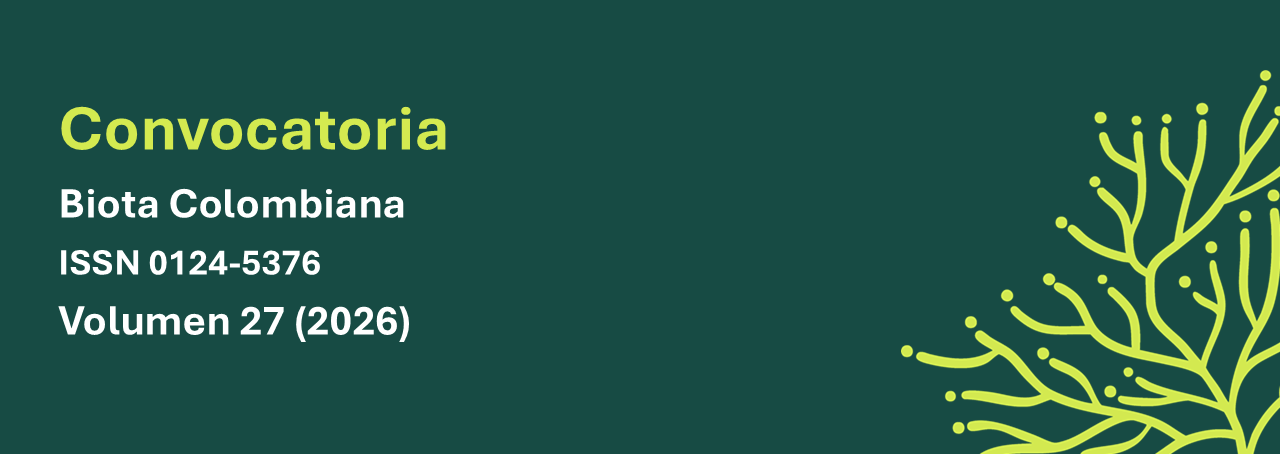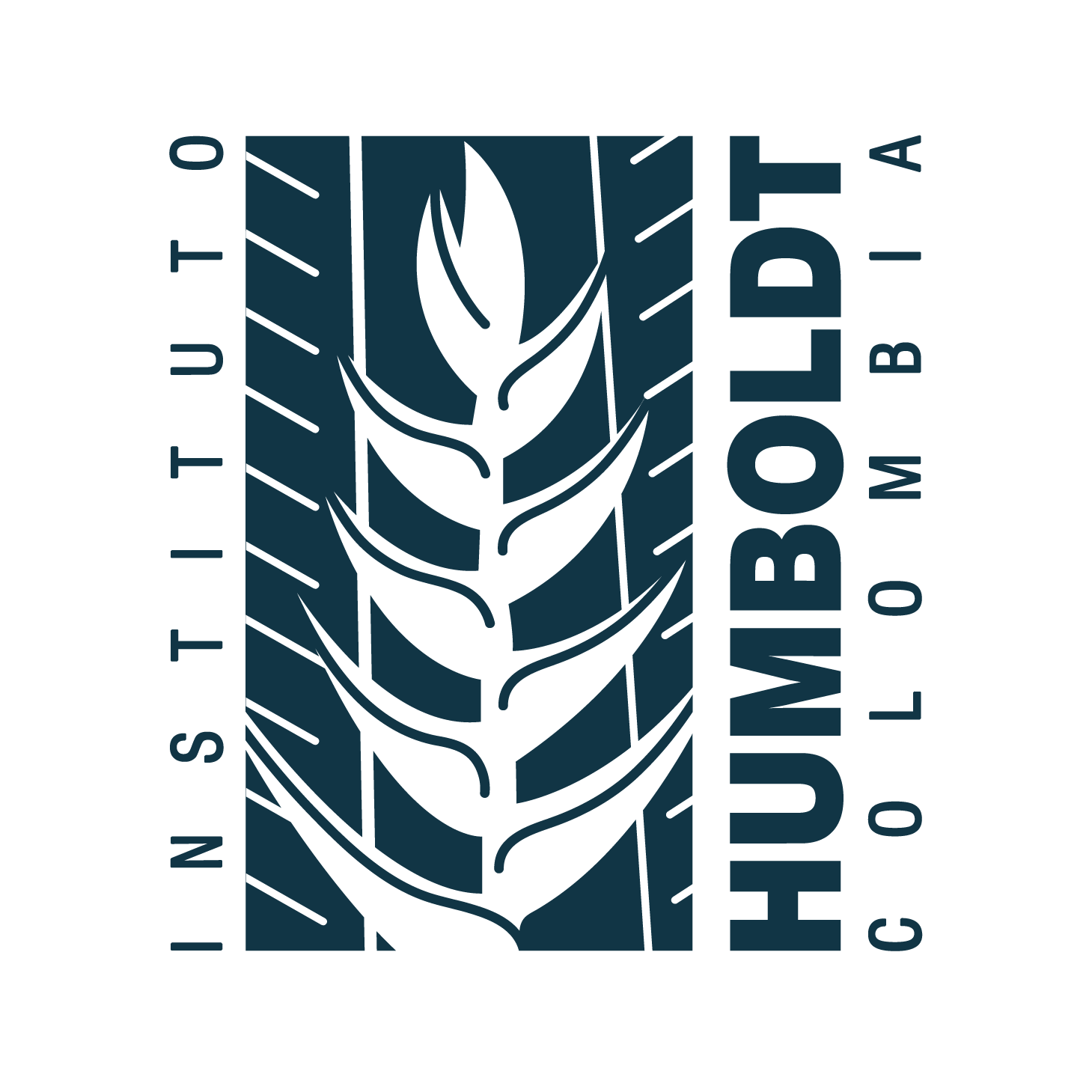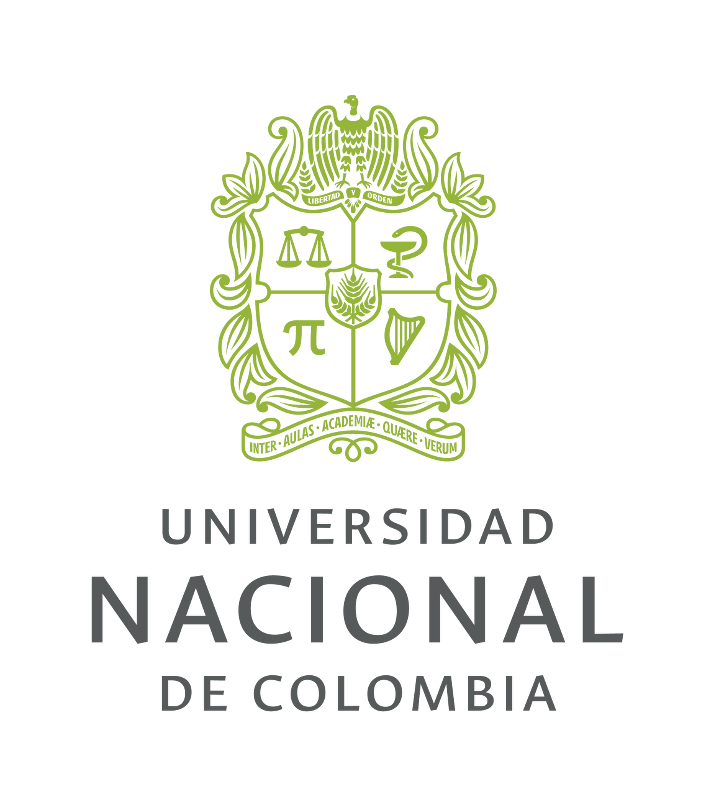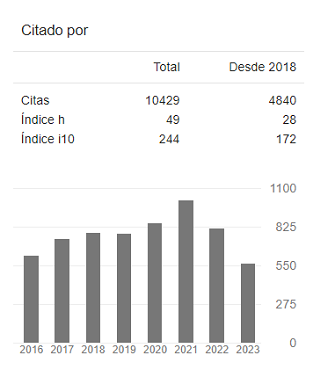Resumen (es):
El Bosque seco Tropical (BsT) es uno de los ecosistemas más amenazados del planeta dada la pérdida de cobertura vegetal causada por actividades antropogénicas. Entender cómo se dan las interacciones planta-animal en este tipo de ecosistemas es particularmente importante porque promueven su mantenimiento y funcionamiento. Nuestro objetivo fue identificar las interacciones entre murciélagos frugívoros y plantas a través de redes de interacción mutualistas en diez remanentes de BsT del Valle del Cauca. Para esto se caracterizó el ensamblaje de murciélagos y las semillas encontradas en sus heces y se evaluaron las propiedades estructurales de redes (anidamiento, modularidad y robustez). Se encontraron 36 especies de murciélagos y 1142 individuos; adicionalmente, se identificaron 19 669 semillas y 85 interacciones entre 18 especies de murciélagos y 19 especies de plantas. La red de interacción resultante presentó una estructura anidada, modular y robusta a la pérdida de especies especialistas pero susceptible a la pérdida de especies generalistas. Estos resultados dejan en evidencia la importancia de los murciélagos para el análisis de las interacciones planta-animal y a su vez los propone como un grupo clave para ser incluidos en planes de conservación y restauración de ecosistemas altamente perturbados como el BsT del Valle del Cauca.
Resumen (en):
The Tropical Dry Forest is one of the most threatened ecosystems due to the loss of vegetation cover caused by anthropogenic activities. Understanding how plant-animal interactions occur in this type of ecosystem is particularly important because these interactions promote the maintenance and functioning of the ecosystems. Therefore, the objective of this study was to identify interactions between fruit bats and plants through mutualistic interaction networks in ten tropical dry forest fragments in Valle del Cauca, Colombia. For this purpose, we characterized the bat community, as well as the seeds found in their feces; with the data obtained, the structural properties of the network (nestedness, modularity and robustness) were evaluated. Our results show 36 species and 1142 individuals of bats, where we identified 19 669 seeds grouped in 85 interactions between 18 bat species and 19 plant species. Moreover, the resulting interaction network presented a nestedness, modular structure, robust to the loss of specialist species but susceptible to the loss of generalist species. These results demonstrate the importance of bats for the analysis of plant-animal interactions and highlight them as a key group to be considered in conservation and restoration plans in highly disturbed ecosystems such as the Tropical Dry Forest of Valle del Cauca.
Palabras clave:
Ecology, Interaction network, Mutualism, Seed dispersal (en)
Referencias
Aizen, M. A., Sabatino, M. & Tylianakis, J. M. (2012). Specialization and rarity predict nonrandom loss of interactions from mutualist networks. Science, 335, 1486– 1489. https://doi.org/10.1126/science.1215320
Almeida-Neto, M. & Ulrich, W. (2011). A straightforward computational approach for measuring nestedness using quantitative matrices. Environmental Modelling and Software, 26(2), 173-178. https://doi.org/10.1016/j.envsoft.2010.08.003
Alvarado-Solano, D. P. & Otero-Ospina, J. T. (2015). Distribución espacial del Bosque seco Tropical en el Valle del Cauca, Colombia. Acta Biológica Colombiana, 20(3), 141-153. https://doi.org/10.15446/abc.v20n3.46703
Arcila-Cardona, A. M., Valderrama, A. C. & Chacón de Ulloa, P. (2012). Estado de fragmentación del bosque seco de la cuenca del río Cauca, Colombia. Biota Colombiana, 13(2), 82-101. https://doi.org/10.21068/c2017.v18n01a21
Armbrecht, I. & Ulloa-Chacón, P. (1999). Rareza y diversidad de hormigas en fragmentos de bosque seco colombianos y sus matrices. Biotropica, 31(4), 646–653. https://doi.org/10.1111/j.1744-7429.1999.tb00413.x
Aroca, A. K., Gónzalez, L. A., Hurtado, M. A. & Murillo-García, O. E. (2016). Preferencia en la dieta de murciélagos frugívoros (Phyllostomidae) en un fragmento de bosque seco tropical. Revista de Ciencias, 20(2), 139-146. https://doi.org/10.25100/rc.v20i2.4607
Bascompte, J. & Jordano, P. (2014). Mutualistic Networks. Princeton University Press.
Bascompte, J. & Jordano, P. (2007). Plant-animal mutualistic networks: the architecture of biodiversity. Annual Review of Ecology and Systematics, 38, 567-593. https://doi.org/10.1146/annurev.ecolsys.38.091206.095818
Bascompte. J. & Jordano, P. (2008). Mutualistic networks of species. Investigación y ciencia, 384, 50-59.
Bascompte. J., Jordano, P., Melian, C. J. & Olesen, J. M. (2003). The nested assembly of plant-animal mutualistic networks. Proceedings of the National Academy of Sciences, 100(16), 9383–9387. https://doi.org/10.1073/pnas.1633576100
Beckett, S. J. (2016) Improved community detection in weighted bipartite networks. Royal Society open science, 3(1), 140536. https://doi.org/10.1098/rsos.140536
Bernard, E. (2001). Vertical stratification of bat communities in primary forests of Central Amazon, Brazil. Journal of Tropical Ecology, 17(1), 115-126. https://doi.org/10.1017/s0266467401001079
Burgos, E., Ceva, H., Perazzo, R. P., Devoto, M. & Medan, D. (2007). Why nestedness in mutualistic networks? Journal of Theoretical Biology, 247(2), 307-313. https://doi.org/10.1016/j.jtbi.2007.07.030
Carvajal-Nieto, P., Bernal, A. & Medina, S. (2021). Flora y Fauna asociada a servicios ecosistémicos de polinización y zoocoria para 10 remanentes de bosque seco tropical en el Valle del Cauca. Version 1.2. Instituto para la Investigación y la Preservación del Patrimonio Cultural y Natural del Valle del Cauca - INCIVA. Occurrence dataset
Castaño, J. H., Carranza-Quiceno, J. A. & Pérez-Torres, J. (2020). Bat-fruit networks structure resist habitat modification but species roles change in the most transformed habitats. Acta Oecologica, 105, 103550. https://doi.org/10.1016/j.actao.2020.103550
Castaño, J. H., Carranza, J. A. & Pérez-Torres, J. (2018). Diet and trophic structure in assemblages of montane frugivorous phyllostomid bats. Acta Oecologica, 91, 81–90. https://doi.org/10.1016/j.actao.2018.06.005
Chacoff, N. P., Resasco, J. & Vázquez, D. P. (2018). Interaction frequency. network position. and the temporal persistence of interactions in a plant-pollinator network. Ecology, 99(1), 21– 28. https://doi.org/10.1002/ecy.2063
Cotler, H. & Ortega-Larrocea, M. P. (2006). Effects of land use on soil erosion in a tropical dry forest ecosystem, Chamela watershed, Mexico. Catena, 65(2), 107-117. https://doi.org/10.1016/j.catena.2005.11.004
Díaz, M.M., Solari, S., Aguirre, L.F., Aguiar, L. & Barquez, R.M. (2016). Clave de identificación de los murciélagos de Sudamérica, 2nd ed. Yerba Buena, Tucumán, Argentina.
Dormann, C., Fründ, J. & Schaefer, H. (2017). Identifying Causes of Patterns in Ecological Networks: Opportunities and Limitations. Annual Review of Ecology, Evolution, and Systematics. 48. https://doi.org/10.1146/annurev-ecolsys-110316-022928
Dormann, F., Fruend, J., Gruber, B., Beckett, S., Devoto, M., Iriondo, J. & Vazquez, D. (2019). Package bipartite Visualising Bipartite Networks and Calculating Some (Ecological) Indices. https://github.com/biometry/bipartite
Dumont, E. R. (2003). Bats and fruit: An ecomorphological approach. En Kunz, T. & Fenton, H. R. eds. Bat ecology. (Pp. 308-428). University of Chicago Press.
Fenton, M.B., Acharya, L., Audet, D., Hickey, M.B.C.,Merriman, C., Obrist, M.K. & Syme, D.M. (1992). Phyllostomid bats (Chiroptera: Phyllostomidae) as indicators of habitat disruption in the Neotropics. Biotropica, 24, 440-446. https://doi.org/10.2307/2388615
Figueiredo, R. A. & Sazima, M. (2000). Pollination biology of Piperaceae species in southeastern Brazil. Annals of Botany London, 85(4), 455-460. https://doi.org/10.1006/anbo.1999.1087
Giannini, N. & Kalko, E. K. V. (2004) Trophic structure in a large assemblage of phyllostomid bats in Panama. Oikos, 105, 209–220. https://doi.org/10.1111/j.0030-1299.2004.12690.x
Jones, K. E., Beninda-Emonds, O. R. & Gittleman, J. L. (2005). Bats, clocks, and rocks: diversification patterns in Chiroptera. Evolution, 59(10), 2243-2255. https://doi.org/10.1554/04-635.1
Jordano, P., Vásquez, D. & Bascompte, J. (2009). Redes complejas de interacciones mutualistas planta-animal En R. Mendel. M. Aizen. & R. Zamora (Eds). Ecología y Evolución de Interacciones planta-animal (Pp.17-42). Editorial Universitaria.
Kalko, E. K., Estrada-Villegas, S., Schmidt, M., Wegmann, M. & Meyer, C. F. (2008). Flying high assessing the use of the aerosphere by bats. Integrative and Comparative Biology, 48(1), 60-73. https://doi.org/10.1093/icb/icn030
Lima, I. P. & Reis, N. R. (2004). The availability of Piperaceae and the search for this resource by Carollia perspicillata (Linnaeus) (Chiroptera. Phyllostomidae. Carolliinae) in Parque Municipal Arthur Thomas. Londrina. Paraná. Brazil. Revista Brasileira de Zoologia, 21(2), 371-377. https://doi.org/10.1590/s0101-81752004000200035
Lindenmayer. D. B., Wood, J. T., McBurney, L., MacGregor, C., Youngentob, K. & Banks, S. C. (2011). How to make a common species rare: a case against conservation complacency. Biological Conservation, 144(5), 1663– 1672. https://doi.org/10.1016/j.biocon.2011.02.022
Lobova, T. A., Geiselman, C. K. & Mori, S. A. (2009). Seed dispersal by bats in the Neotropics. New York Botanical Garden.
Lopez. J. E. & C. Vaughan. (2007). Food niche overlap among neotropical frugivorous bats in Costa Rica. Revista de Biología Tropical, 55, 301– 313. https://doi.org/10.15517/rbt.v55i1.6082
Mello, M.A.R., Marquitti, F.M.D., Guimarães, P.R. Jr., Kalko, E.K.V., Jordano, P. & Martinez de Aguiar, M. A. (2011) The Missing Part of Seed Dispersal Networks: Structure and Robustness of Bat-Fruit Interactions. PLOS ONE, 6(2), e17395. https://doi.org/10.1371/journal.pone.0017395
Muscarella, R. & Fleming, T. H. (2007). The role of frugivorous bats in tropical forest succesion. Biological Reviews, 82(4), 573-570. https://doi.org/10.1111/j.1469-185x.2007.00026.x
Olesen, J. M., Bascompte, J., Dupont, Y. L. & Jordano, P. (2007). The modularity of pollination networks. Proceedings of the National Academy of Sciences, 104(50), 19891-19896. https://doi.org/10.1073/pnas.0706375104
Ortiz-Pulido, R., Laborde, J. & Guevara, S. (2000). Frugivoría por Aves en un Paisaje Fragmentado: Consecuencias en la Dispersión de Semillas. Biotropica, 32(3), 473-488. https://doi.org/10.1111/j.1744-7429.2000.tb00494.x
Patfield, W. M. (1981). Algorithm AS 159: An efficient method of generating random RxC tables with givenrow and column totals. Journal of the royal Statistical Society, 91-97.
Pizano, C. & García, H. (2014). El Bosque Seco Tropical en Colombia. Instituto de Investigación de Recursos Biológicos Alexander von Humboldt.
R Core Team. (2022). R: A language and environment for statistical computing. R Foundation for Statistical Computing, Vienna, Austria. URL https://www.R-project.org/.
Ramírez-Chaves, H. E., Suárez-Castro, A. F., Morales-Martínez, D. M., Rodríguez-Posada, M. E., Zurc, D., Concha-Osbahr, D. C., Trujillo, A., Noguera-Urbano, E. A., Pantoja-Peña, G. E., González-Maya, J. F., Pérez-Torres, J., Mantilla-Meluk, H., López-Castañeda, C., Velásquez-Valencia, A. & Zárrate-Charry, D. (2021). Mamíferos de Colombia. v1.12. Sociedad Colombiana de Mastozoología. Dataset/Checklist.
Resasco, J., Chacoff, N. P. & Vázquez, D. P. (2021). Plant–pollinator interactions between generalists persist over time and space. Ecology, 102(6), e03359. https://doi.org/10.1002/ecy.3359
Ríos, M., Giraldo, P. & Correa, D. (2004). Guía de Frutos y Semillas de la Cuenca media del Rio Otún. Fundación EcoAndina. Wildlife Conservation Society.
Robinson, M. L. & Strauss, S. Y. (2020). Generalists are more specialized in low-resource habitats. increasing stability of ecological network structure. Proceedings of the National Academy of Sciences, 117(4), 2043-2048. https://doi.org/10.1073/pnas.1820143117
Ruiz, V., Savé, R. & Herrera, A. (2013). Multitemporal analysis of land use change in the Terrestrial Protected Landscape Miraflor Moropotente. Ecosistemas, 22(3), 117-123. https://doi.org/10.7818/ECOS.2013.22-3.16
Sánchez, M. S., Giannini, N. P. & Barquez, R. M. (2012). Bat frugivory in two subtropical rain forests of northern Argentina: testing hypotheses of fruit selection in the Neotropics. Mammalian Biology, 77(1), 22–31.
Schulze, M. D., Seavy, N. E. & Whitacre, D. F. (2000). A comparison of the phyllostomid bat assemblages in undisturbed neotropical forest and in forest fragments of a slash-and-burn farming mosaic in Peten. Guatemala. Biotropica, 32(1), 174-184. https://doi.org/10.1111/j.1744-7429.2000.tb00459.x
Sikes, R. S. & Gannon, W. L. (2011). Guidelines of the American Society of Mammalogists for the use of wild mammals in research. Journal of Mammalogy, 92(1), 235–253. https://doi.org/10.1644/10-mamm-f-355.1
Thies, W. & Kalko, E. K. V. (2004). Phenology of neotropical pepper plants (Piperaceae) and their association with their main dispersers. two short-tailed fruit bats. Carollia perspicillata and C. castanea (Phyllostomidae). Oikos, 104(2), 362– 376. https://doi.org/10.1111/j.0030-1299.2004.12747.x
Vargas. W. (2012). Los bosques secos del Valle del Cauca. Colombia: una aproximación a su flora actual. Biota Colombiana, 13(2), 102-164. http://doi.org/10.15472/9iusrz
Vázquez, D. P., Blüthgen, L. & Chacoff, N. P. (2009). Uniting patterns and process in plant-animal mutualistic networks: a review. Annals of Botany, 103(9), 1445-1457. https://doi.org/10.1093/aob/mcp057
Velásquez-Roa, T. & Murillo-García, O. E. (2019). Influence of bat morphology on structural properties of a plant-frugivore network. Mastozoología Neotropical, 26(2), 440-451. https://doi.org/10.31687/saremMN.19.26.2.0.23
Wagner, D. L. (2020). Insect declines in the Anthropocene. Annual Review of Entomology, 65, 457– 480. https://doi.org/10.1146/annurev-ento-011019-025151
Cómo citar

Esta obra está bajo una licencia internacional Creative Commons Atribución-NoComercial-SinDerivadas 4.0.
Derechos de autor 2023 Instituto de Investigación de Recursos Biológicos Alexander Von Humboldt


















